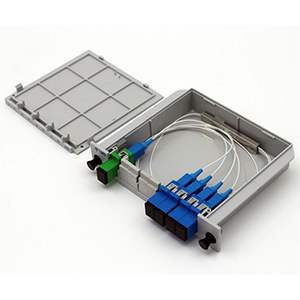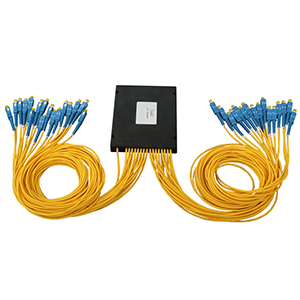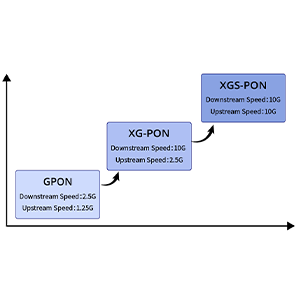Hi, I am happy to introduce you to the knowledge of AEC (Active Ethernet Cable) cable. In this article, I will introduce you to the definition, basic principles of AEC cable, as well as its characteristics and advantages in the field of network transmission. At the same time, I will also discuss the application of AEC cables in data center networks and enterprise networks, and provide information on the technical standards, compatibility, deployment configuration, etc. of AEC cables.
AEC cable introduction
Definition and rationale:
AEC (Active Ethernet Cable) cable is an active Ethernet cable that integrates active electronic devices to amplify, enhance and compensate signals within the cable. AEC cables offer longer transmission distances and better signal quality than traditional passive Ethernet cables such as fiber optic or copper cables.
The basic working principle of AEC cable is to inject electrical energy into the electronic devices at both ends of the cable. These devices enhance the quality of the signal through signal amplification, compensation and reconstruction. They amplify signals to offset signal attenuation and noise interference during cable transmission, allowing for longer signal transmission.
Transmission technology:
As an active Ethernet cable, AEC cable has the following characteristics and uses:
-
Long-distance transmission: AEC cables can support long transmission distances, usually up to several hundred meters or even further. This makes it advantageous in scenarios that require long-distance signal transmission, such as data centers, campus networks, and industrial environments.
-
Signal enhancement: AEC cable amplifies and compensates the signal through internal active electronic devices, which can provide stronger signal strength and better signal quality. This is very helpful in overcoming transmission distance limitations and reducing signal attenuation.
-
Flexibility and ease of use: AEC cables are compatible with standard Ethernet protocols and can be directly connected to Ethernet devices (such as switches, routers, servers, etc.) without additional equipment or configuration. This makes it very convenient to deploy and use.
-
Multiple media support: AEC cables can be based on different transmission media, such as copper cables, optical fibers, etc. This makes it suitable for different network environments and needs, and the appropriate medium can be selected according to the specific situation.
AEC cables are widely used in applications requiring long-distance transmission and signal enhancement, such as data center interconnections, remote monitoring, video surveillance systems, wireless base stations, etc. It provides a reliable and high-performance solution that makes long-distance Ethernet transmission possible.
Application fields of AEC cable
Data center network:
AEC cables have a wide range of applications in data center networks, especially in the following areas:
-
High-speed data transmission: Data centers require high-speed and reliable data transmission to support large-scale data processing and storage. AEC cables enable high-speed data transmission by providing signal enhancement and compensation to meet the bandwidth and performance requirements of data centers.
-
Long-distance connections: Data centers usually cover large areas and require long-distance connections to interconnect servers, storage devices and network devices. The signal boosting capabilities of AEC cables make long-distance connections possible while maintaining low signal attenuation and noise interference.
-
Flexible cabling solutions: Data center networks require flexible cabling solutions to adapt to changing equipment layouts and network topologies. AEC cables can be customized in length as needed and can use different transmission media (such as copper or fiber optics), providing flexible cabling options.
Corporate network:
AEC cables are also widely used in enterprise networks, mainly in the following aspects:
-
Flexible cabling: Enterprise networks require flexible cabling solutions to accommodate the connectivity needs between offices, conference rooms, workspaces, and devices. AEC cables can be customized in length according to actual conditions, providing flexible wiring options and simplifying the wiring process.
-
High-speed connection performance: Modern enterprises have increasingly higher requirements for high-speed data transmission and network performance. AEC cables can provide high-speed connection performance to meet enterprise demands for bandwidth and response time, supporting large-scale data transmission and real-time applications.
-
Long-distance connections: Enterprise networks often require connections across different floors, buildings, or campuses. The signal enhancement capabilities of AEC cables make long-distance connections possible while maintaining low signal attenuation and noise interference, ensuring reliable data transmission.
In general, AEC cables can provide high-speed, long-distance connection performance in both data center networks and enterprise networks, and have flexible cabling solutions to meet the needs of different scenarios. Whether it is large-scale data transmission in a data center or office connections for corporate networks, AEC cables can provide a reliable transmission foundation for the network.
Features and advantages of AEC cable
High speed transmission:
AEC cable provides high-speed data transmission capabilities with the following features and advantages:
-
Large bandwidth support: AEC cable can support high bandwidth data transmission requirements. It can adapt to multiple Ethernet protocols, such as 10 Gigabit Ethernet (10GbE), 40 Gigabit Ethernet (40GbE) and 100 Gigabit Ethernet (100GbE), to meet high-speed data transmission needs in different network environments.
-
Signal enhancement and compensation: Active electronic devices are integrated inside the AEC cable, which can amplify and compensate the signal. This enables it to overcome the challenges caused by transmission distance and signal attenuation, providing better signal quality and lower bit error rate (BER), thereby enabling high-speed data transmission.
-
Low latency: AEC cable has low transmission latency and can provide fast data transmission and response time. This is important for applications with high real-time requirements, such as voice communications, video streaming, and real-time data processing.
Long distance transmission:
As an active cable, AEC cable has the following advantages to enable signal transmission over longer distances:
-
Signal enhancement: The active electronic devices inside the AEC cable can amplify and compensate the signal, effectively counteracting signal attenuation and noise interference. This allows AEC cables to transmit signals over longer distances without losing signal quality and reliability.
-
Low signal attenuation: AEC cable uses advanced signal amplification technology to reduce signal attenuation during transmission. AEC cables maintain lower signal attenuation over longer distances than traditional passive cables such as fiber optic or copper cables.
-
Stability and reliability: AEC cable improves signal stability and reliability through signal enhancement and compensation technology. It is able to resist interference and noise in transmission, ensuring signal integrity and accuracy, thereby providing a reliable long-distance transmission solution.
In general, AEC cable has the characteristics and advantages of high-speed transmission and long-distance transmission. It can support high-bandwidth data transmission requirements and achieve longer-distance signal transmission through signal enhancement and compensation technology, providing reliable and high-performance network connection solutions.
Technical standards and specifications for AEC cables
Cable construction:
AEC cable construction features can vary by manufacturer and specific product, but generally include the following:
-
Cable length: AEC cables can be customized in length according to actual needs to adapt to the wiring requirements in different scenarios. This makes it flexible for use in a variety of network environments, including data centers and enterprise networks.
-
Power supply: AEC cable is an active cable and usually requires an external power supply to supply the work of electronic devices. These electronic devices are responsible for amplifying and compensating the signal to ensure signal quality and reliability.
-
Signal gain: The active electronic devices inside the AEC cable can enhance the signal to overcome signal attenuation and noise interference during transmission. This signal gain technology helps improve the distance and reliability of data transmission.
letter of agreement:
AEC cables can support a variety of communication protocols, including but not limited to the following:
-
Ethernet: AEC cable can be used for Ethernet protocols, including high-speed Ethernet applications such as 10GbE, 40GbE and 100GbE. It provides fast data transfer speeds and reliable network connectivity.
-
Fiber Channel: AEC cables can also be used with the Fiber Channel protocol for high-performance storage and data center networks. Fiber Channel provides high-bandwidth, low-latency storage and networking connectivity.
-
InfiniBand: AEC cables can support the InfiniBand protocol and are used for high-performance computing and data center interconnection. InfiniBand provides low-latency, high-bandwidth and scalable communications solutions.
In addition to the communication protocols mentioned above, AEC cables can support other standards and protocols, depending on the product’s design and manufacturer’s specifications. The technical standards and specifications for AEC cables cover aspects such as cable construction, length, power supply and signal gain. It can support a variety of communication protocols, including Ethernet, Fiber Channel and InfiniBand, to meet high-speed data transmission and network connection needs in different application environments.
AEC cable compatibility and interface types
Compatibility points:
AEC cables need to consider the following compatibility points when connecting to other devices and network interfaces:
-
Network equipment compatibility: AEC cables need to be compatible with network equipment (such as switches, routers, servers, etc.) to ensure the reliability and normal operation of signal transmission. This includes ensuring that the communication protocols supported by the AEC cable match the requirements of the network equipment.
-
Interface compatibility: The interface type of the AEC cable needs to match the interface type of the connected device. Different devices may use different types of interfaces, such as RJ45, SFP, QSFP, etc. Therefore, when selecting an AEC cable, you need to ensure that its interface type is compatible with that of the target device.
-
Rate matching: The transmission rate of the AEC cable should match the requirements of the connected device. For example, if the target device requires 10GbE speeds, the AEC cable selected should also support the corresponding transmission speed.
Interface Type:
Common interface types of AEC cables include:
-
RJ45: RJ45 is a common type of Ethernet interface used to connect network devices, such as computers, switches, and routers. AEC cables are available in variants with RJ45 connectors to facilitate connection to these devices.
-
SFP (Small Form-Factor Pluggable): SFP is a small-size pluggable module interface that is widely used for optical fiber and copper cable transmission. AEC cables may be available in SFP connector-compatible variants to meet the connectivity needs of specific devices.
-
QSFP (Quad Small Form-Factor Pluggable): QSFP is a four-channel small-size pluggable module interface, often used for high-speed data transmission, such as 40GbE and 100GbE. AEC cables may be available in variants compatible with QSFP interfaces to support these high-speed network connections.
In addition to the above interface types, AEC cables can support other types of interfaces, depending on the product’s design and manufacturer’s specifications. When selecting an AEC cable, you should ensure that its interface type matches that of the target device to ensure proper connection and normal operation.
AEC cable deployment and configuration
Cable installation:
The following are general installation guidelines for AEC cables, including steps for connecting and securing:
-
Preparation: Before installing the AEC cable, ensure that the preparation of the target device and network environment has been completed. This includes confirming the device’s interface type and requirements, determining the length and quantity of cables, and clearing the installation area.
-
Connect the device: Connect one end of the AEC cable to the appropriate interface of the source device, such as a switch or router, etc. Depending on the interface type, it may be necessary to insert connectors such as RJ45, SFP or QSFP.
-
Secure the cable: Make sure the AEC cable connection is secure and not loose. Depending on the situation, securing devices such as cable ties, cable clamps or holders may be used to maintain cable stability.
-
Cabling and protection: Route the AEC cable to the target location according to actual needs. Make sure the cables are not damaged or interfered with by the outside world during wiring. Use cable ducts, cable ducts, or other protective measures to protect cables from physical damage.
-
Test the connection: After the connection is completed, perform a connection test to ensure that the AEC cable is working properly. You can use network test tools or the diagnostic function of the device to verify the reliability and transmission quality of the connection.
Network Configuration:
The network configuration method of AEC cable mainly involves device identification and transmission parameter adjustment. Specific configuration steps may vary depending on your device and network environment. The following is a general network configuration method:
-
Device identification: In the network, ensure that connected devices can recognize and communicate with each other. This usually involves IP address assignment for the device, subnet mask settings, gateway configuration, etc. Depending on the network environment, you can use DHCP to automatically assign an IP address or manually configure a static IP address.
-
Transmission parameter adjustment: Depending on the communication protocol and transmission requirements supported by the AEC cable, the transmission parameters may need to be adjusted. This includes bandwidth limits, rate settings, transmission mode selection, etc. Configure the corresponding parameters according to the management interface of the network device.
-
Network security configuration: Carry out network security configuration according to actual needs to protect the network from potential threats. This may include security measures such as access control lists (ACLs), firewall settings, virtual private networks (VPNs), and more.
-
Monitoring and optimization: Configure network monitoring tools to monitor the performance and status of AEC cables in real time. Based on the monitoring results, necessary optimization adjustments are made to ensure network stability and good transmission quality.
Please note that specific AEC cable deployment and configuration steps may vary depending on product model, manufacturer, and network environment. When installing and configuring, you should consult relevant product documentation, manufacturer’s guidelines, and network device specifications, and follow best practices.
Advantages and future development of AEC cables
Simplified wiring:
AEC cable has the following advantages in the wiring structure, which can simplify wiring and reduce the number and complexity of equipment and cables:
-
Integrated audio, video and Ethernet: AEC cable is a high-performance cable that integrates audio, video and Ethernet transmission functions. While traditional cabling structures often require separate audio, video and Ethernet cables, the advent of AEC cable integrates them into the same cable, reducing the number of cables and physical space required.
-
Single connection: AEC cable is achieved through a single connection transmission of audio, video and Ethernet signals. This means only one plugging and unplugging is required when connecting devices, reducing connection points and the possibility of connection errors, simplifying cabling operations.
-
Flexibility and scalability: AEC cables provide flexible cabling options that can be customized according to actual needs. It can support different transmission rates and protocols and adapt to various audio, video and network application scenarios. In addition, AEC cables also have good scalability, making it easy to expand the network and add new audio and video equipment.
Future trends:
AEC cables have broad development prospects in technology and applications. The following are some future development trends:
-
Higher transmission rates: With the continuous advancement of technology, future AEC cables will support higher transmission rates. This will enable it to meet the transmission needs for high-definition video, 4K, 8K or even higher resolutions, as well as larger bandwidth network applications.
-
Expansion of multimedia application fields: AEC cables are not only used in conference rooms and home entertainment, but will also be used in a wider range of fields, such as healthcare, education, digital advertising and smart homes. With the popularity of multimedia technology and the increase in demand, AEC cables will play an important role in these fields.
-
Better interoperability: Future AEC cables will pay more attention to interoperability and be better compatible with different brands and types of equipment. This will provide users with greater flexibility and choice and facilitate seamless connectivity and integration between devices.
-
Network security and data protection: As the importance of network security and data protection becomes increasingly prominent, future AEC cables will pay more attention to security. This includes encryption technology, access control and data transmission protection measures to ensure the safe transmission of audio, video and network data.
It should be noted that the future development of AEC cables depends on technological innovation, market demand and the development of industry standards. As technology continues to evolve and applications expand, AEC cable is expected to continue to play an important role in simplifying cabling and providing high-performance audio, video and network transmission.
Summarize:
As an active Ethernet cable, AEC cable has unique advantages in high-speed data transmission and long-distance connections. It is increasingly used in data center networks and enterprise networks and has the potential to simplify cabling structures and support higher transmission rates.
In the future, AEC cables are expected to achieve greater breakthroughs in technology and applications and promote the development of network technology. If you are interested in AEC cables, the following article will further expand on it for you. If you have any further questions about AEC cables or would like more information, please stay tuned to GracyFiber and we will be happy to assist you. Thanks!





